Excerpts from Jim Conrad's
Naturalist Newsletter
notes from a camping trip into northern Guatemala's Petén department, in September, 2018
A CLUSIA SPECIES
During my recent camping trip south to El Rosario National Park, on Sayaxaché's east side in northern Guatemala's Petén department, as I explored the park campground's perimeter on September 30, I came upon the pretty sight shown below:
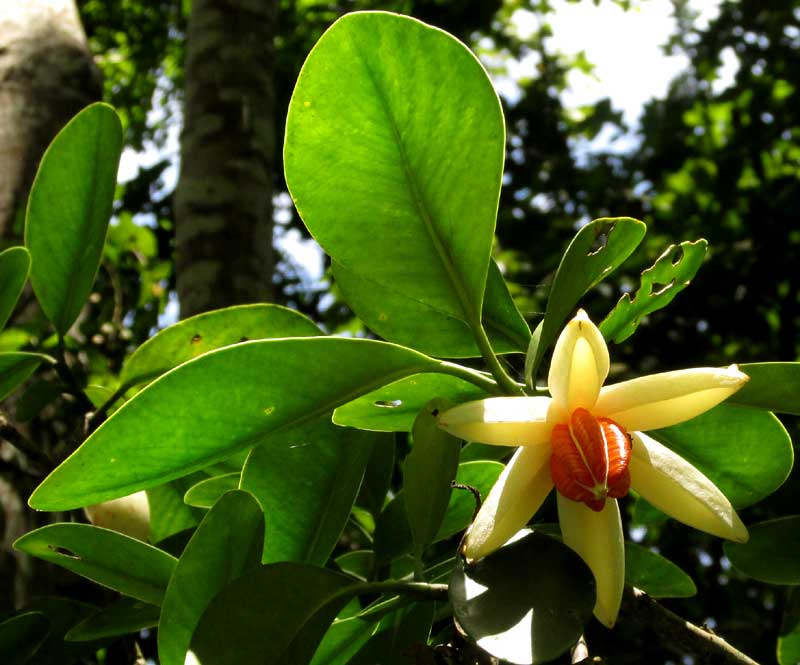
For a split second I thought it was a flowering magnolia tree, for the thick, leathery, evergreen leaves were magnolia-like, as was the blossom. But, wait: Where are the flower's stamens, and it's stigma, style and ovary? There were none, as you can see closer up below:
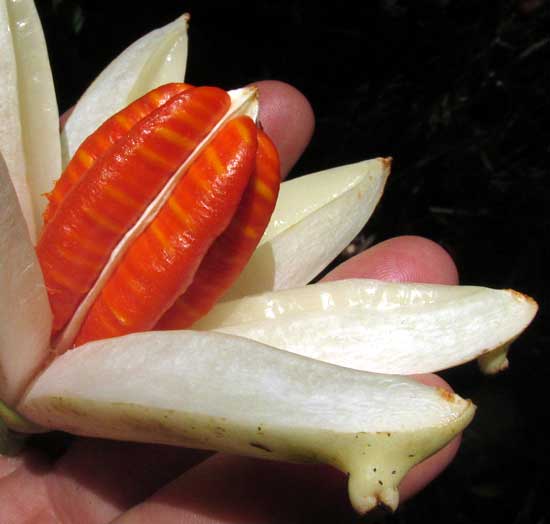
The "flower" is a mature fruit with its shell splitting into petal-like segments. The orange item made more sense when its top was broken off, shown below:
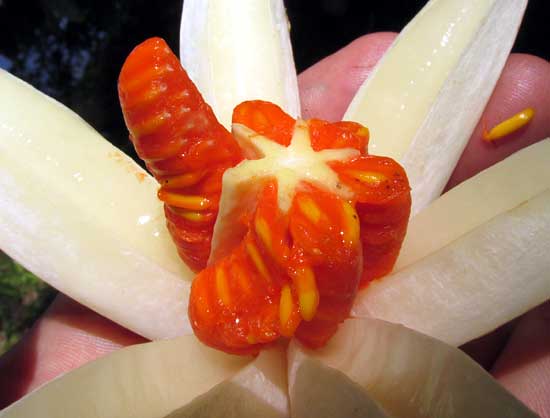
Suspended within the orange matrix, the oblong, yellowish things are seeds; a seed parted from its orange matrix is stuck to my fingertip at the image's top, right. The orange matter surrounding the seeds consists of stuck-together "aril," an aril being a seed's outer covering. When arils are bright and positioned so conspicuously in a fruit, it's to be understood that they are providing a visual attractant to animals that will eat the aril, in the process ingesting the seeds, which the animal then will disseminate into new territory.
Knowing I'd need to "do the botany" later, I looked around for more field marks. Several branches of the 10-ft-high bush or small tree (3m) bore egglike objects that earlier I'd thought were magnolia flowers about to open, but which now I understood to be unopened fruits. One is shown below:
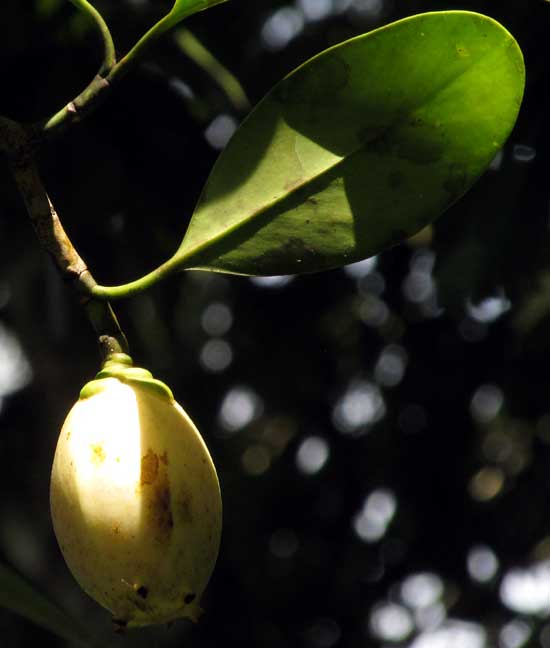
Magnolia stems bear stipular rings -- scars left by large stipules that have fallen off -- surrounding the stem at each leaf. This tree's twigs also bore such rings, as shown below:

But, these fruits and seeds are not even close to being like those of magnolias. What tricky things Nature can do...
It took awhile to figure out that the mysterious little tree was a member of the tropical Garcinia Family, the Clusiaceae, a family best known for being home to several species producing delicious fruits, especially the Mamey or Mammee-Apple native to and commonly grown in humid, tropical Mexico, and the southeast-Asian Mangosteen.
Our tree belongs to the genus Clusia, but without flowers I can't be sure which species it is. The most commonly occurring and best known species is Clusia rosea, known in English as the Autograph Tree, and our tree's features match some pictures on the Internet showing that species.
Maybe I can see the flowers on a return trip.
notes from a camping trip into northern Guatemala's Petén department, in March, 2019
A CLUSIA SPECIES REVISITED
During my recent camping trip south to El Rosario National Park, on Sayaxaché's east side in northern Guatemala's Petén department, on March 30 I found the same individual tree documented above, and I was looking for flowers, for identification. There were none, but certain flower buds appeared ready to open at any moment, at shown below:
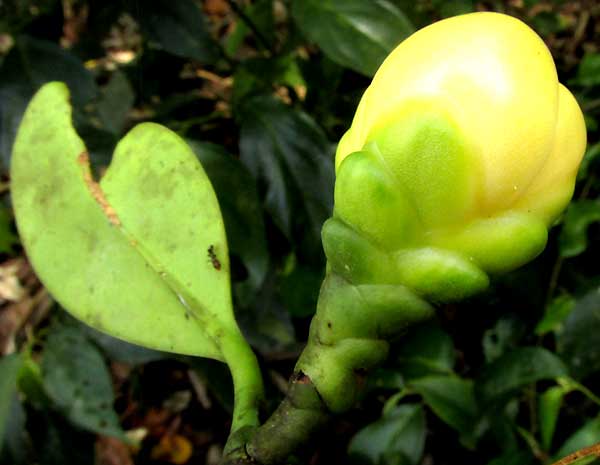
The flower bud was broken open up to reveal the interesting features shown below:
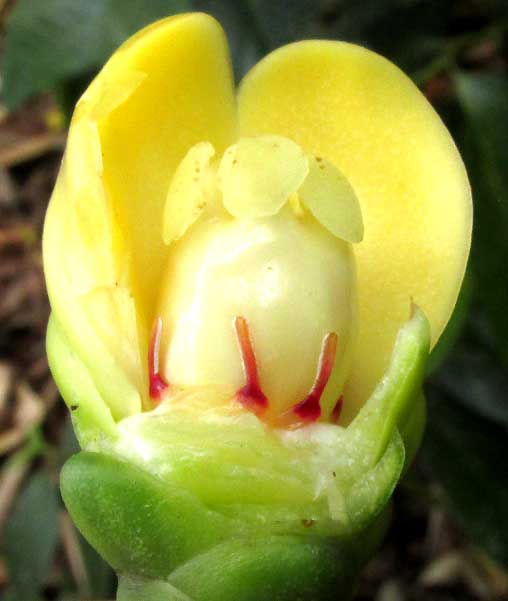
Apparently I'd arrived between flowering periods, because at least one ovary had enlarged substantially, shown below:

Finally I've found on the Internet the 1961 Flora of Guatemala treatment of the Gutiffereae (now the Clusiaceae) by Paul Standley and Louis Williams -- Fieldiana Botany:v.24:pt.7:#1. According to my use of that key we definitely have a Clusia, but it's not the species rosea that earlier I thought it might be. According to the key, to be rosea the leaves' petioles should be "...very short, thick, deeply canaliculate, usually marginate for most or all their length..." and our leaves' petioles aren't like that.
That decided, the leaves' rounded tips disqualify two other species. Our plant's leaves, 15cm or longer, and the fruits well longer than 4cm, lead directly to CLUSIA CHANEKIANA, which in the 1961 paper was described as known only from the type locality in Belize. The species grows into an epiphytic shrub 4m high. Our tree was so tightly entangled in the forest's wall that I couldn't see if it was epiphytic without cutting at things, which is not done in national parks.
On the Internet I find no pictures of Clusia chanekiana that can help confirm the ID, and I'm still unsure if we have the right name.